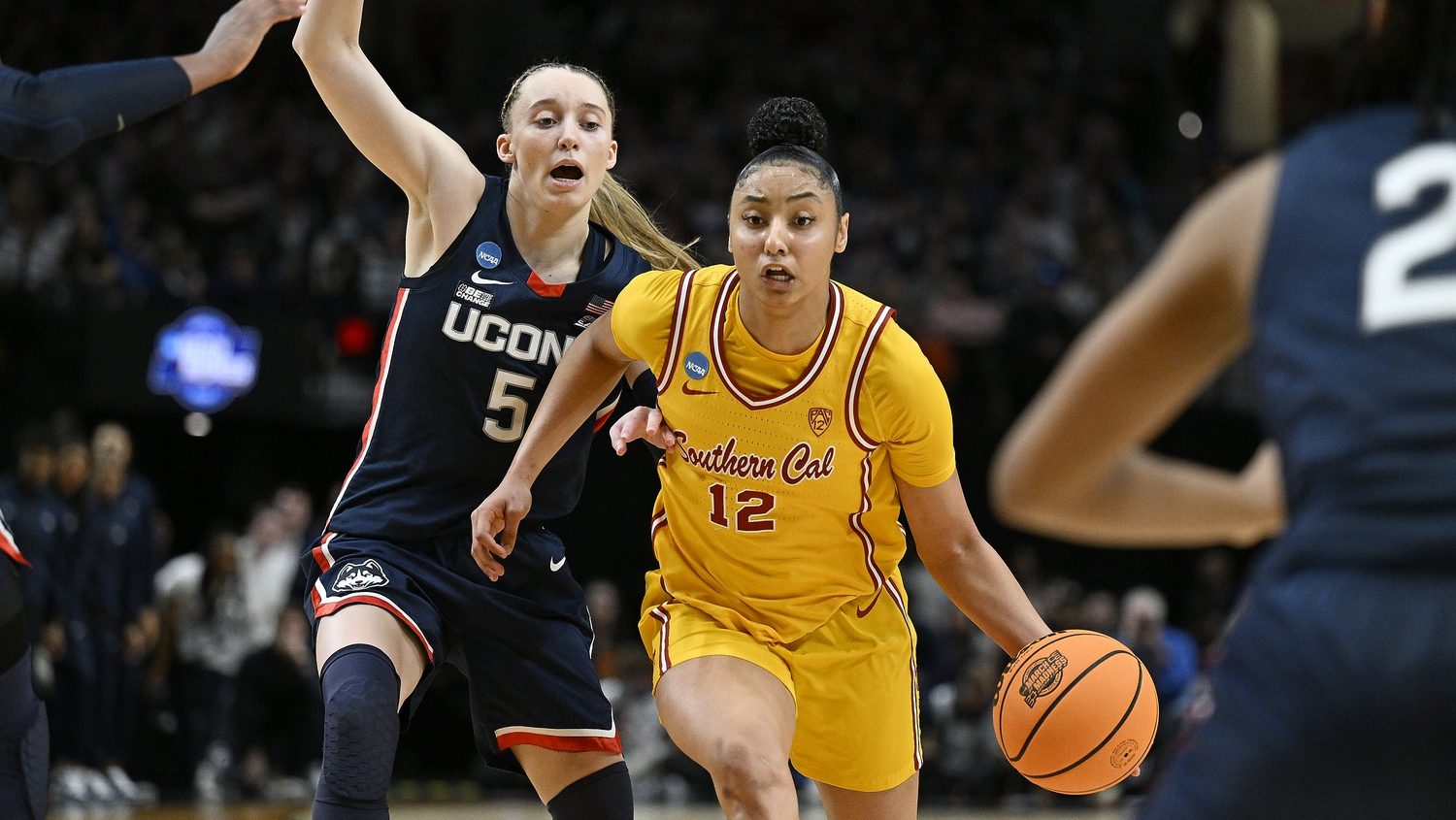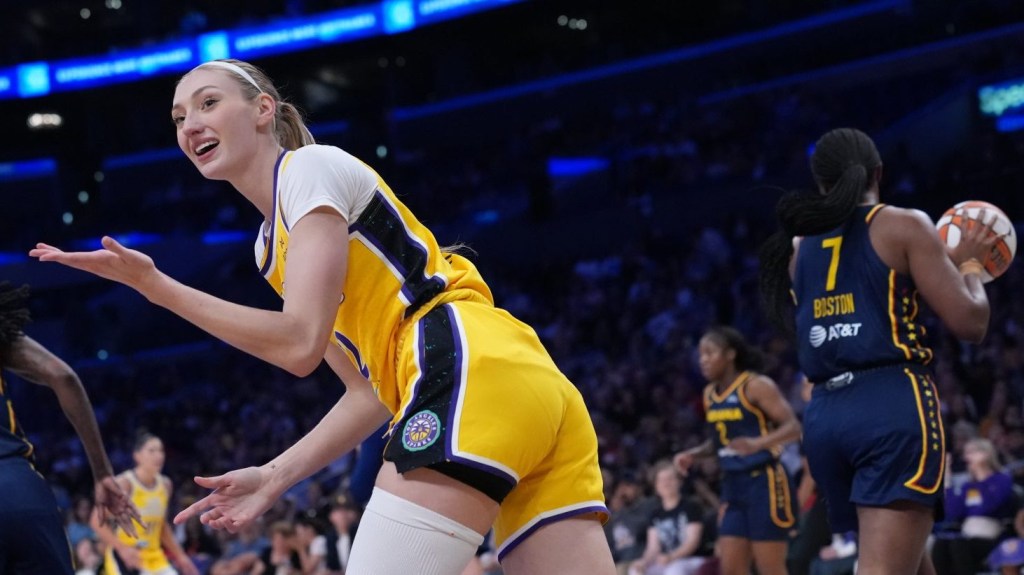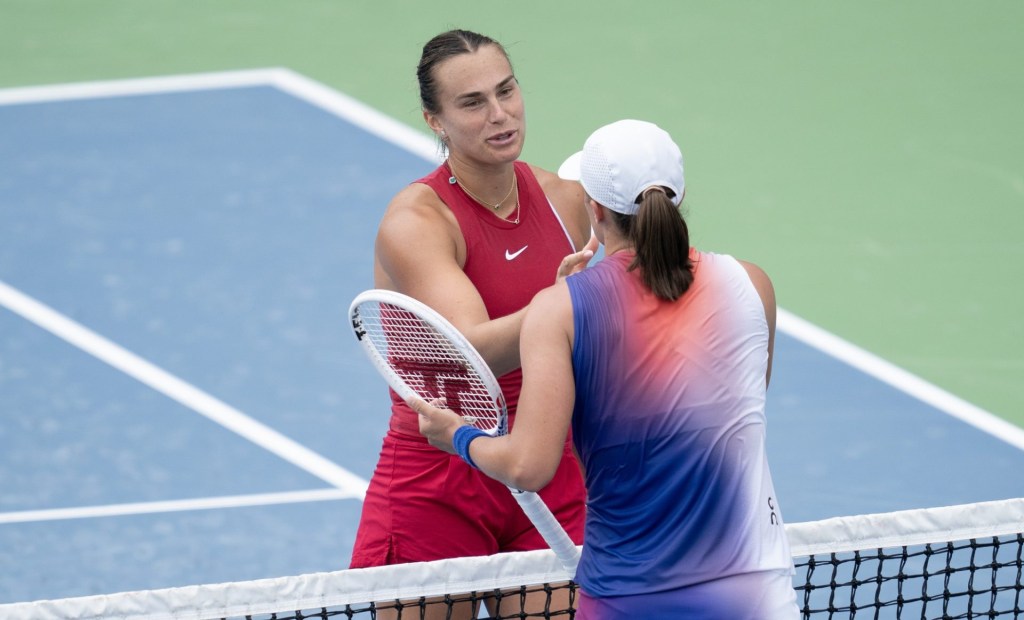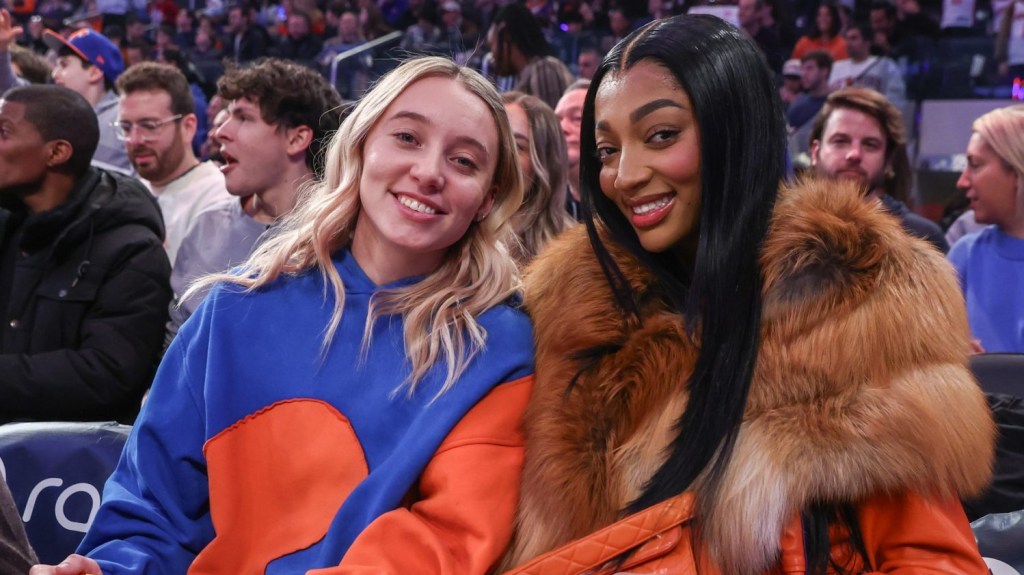The 2024–2025 women’s college basketball season returns following a historic campaign last year. Nearly 20 teams ranked heading into the season play their first game Monday, including some against one another—No. 5 UCLA takes on No. 17 Louisville, and No. 3 USC narrowly defeated No. 20 Ole Miss as part of a doubleheader in Paris. (This is the second year women’s basketball plays its opener in Paris as part of Aflac’s “Oui Play” event.)
Arguably the most significant factor defining this season is the shake-up of the women’s basketball landscape due to conference realignment. The now-defunct Pac-12 was dominant in women’s sports, especially women’s basketball, sending seven teams to the NCAA tournament (and round of 32) last season. Increased travel is a big part of the change: Top-ranked West Coast schools like USC and UCLA will routinely fly to the Midwest for conference games in the Big Ten; NC State, which made it to the Final Four last season (on the men’s side, too) will play away games against Cal, Stanford, and SMU as part of the new ACC.
But another byproduct is a slew of new matchups: Reigning national champion South Carolina will have new SEC competition from preseason No. 4 Texas and No. 10 Oklahoma, which are moving over from the Big 12, and that conference, with its powerhouses like Iowa State and Baylor, is getting four new teams in realignment. These changes were motivated by football media dollars, but they’ll have huge implications for women’s basketball.
Let’s quickly review last year’s historic business boom for women’s college hoops. Building off unprecedented success in March 2023 with 9.9 million viewers tuning in to the Iowa-LSU championship game on ESPN, the NCAA launched into a year of broken records. There were lines of fans wrapped around arenas, sold-out crowds, and sky-high ticket prices. In January, the NCAA announced a $920 million media-rights deal with ESPN for 40 championships including women’s basketball. In February, the Big Ten Women’s Basketball Tournament sold out for the first time, two weeks before it began. In March, the get-in price for No. 6 Iowa versus No. 2 Ohio State was $491.
Much of this movement was thanks to Caitlin Clark, but it wasn’t just about her. All five power conference tournaments saw increases in attendance and viewership—the Big Ten, SEC, and Pac-12 averaged three million, two million, and 1.4 million viewers for their championship games, respectively.
During March Madness, each game approaching the final set a higher and higher bar. It wasn’t just the rabid fans who were paying attention—there were also plenty of new ones. DraftKings said one night of Elite Eight matchups, led by an Iowa-LSU rematch, was comparable on its platform to an NFL game. That showing and UConn-USC outperformed NBA, MLB, and NHL games on several betting platforms. It all culminated with the national title game, which attracted 18.9 million viewers on ABC/ESPN. The figure easily cleared the men’s championship audience of 14.8 million viewers.
Many of the big draws, including Clark, Angel Reese, and Kamilla Cardoso, graduated to the WNBA, where they continued to shatter records. But this year’s stars have consistently commanded national attention, too.
UCLA’s Kiki Rice starred in ESPN’s Full Court Press docuseries in May with Clark and Cardoso. USC’s JuJu Watkins became the NCAA’s all-time freshman scoring leader with 920 points (27.1 points per game), aided by a 51-point performance against No. 4 Stanford. Joining Watkins in Los Angeles is Kiki Iriafen, a transfer from Stanford widely regarded as a top-two pick in next year’s WNBA draft. UConn’s Paige Bueckers, the 2021 National Player of the Year as a freshman whose career has been partially held back by her and her teammates’ injuries, helped draw 14.2 million viewers in the Final Four thriller against Iowa. On the other side of the bracket, South Carolina returner MiLaysia Fulwiley, who coach Dawn Staley calls a “generational talent,” helped earn 7.1 million viewers in last year’s Final Four matchup against NC State. Hailey Van Lith, who won bronze with Team USA in Paris for 3-on-3 basketball, is onto her third program at TCU. Olivia Miles at Notre Dame, Madison Booker at Texas, and Audi Crooks at Iowa State are all lethal weapons expected to lead their teams to stellar seasons.
Many of these athletes have partnerships with big brands like Nike and Gatorade, but the momentum over the past few seasons has led to bigger opportunities outside of name, image, and likeness (NIL) brand deals. Bueckers is getting her own colorway of a Nike shoe this December, the first custom designed Nike for a college athlete (excluding Rice’s shoe with Jordan Brand, which is owned by the Swoosh). The UConn star also signed with the 3-on-3 venture Unrivaled, which gives her an equity stake in the new league. LSU’s Flau’jae Johnson has expanded her career in rap music, releasing a song with Lil Wayne this summer with a music video that got 2.5 million views on YouTube.
This year’s regular-season schedule offers several chances to gauge national excitement in the sport (regional excitement is nothing new—for example, South Carolina has led the nation in attendance the last nine years, with an average of more than 16,000 fans per home game last season). UConn plays Notre Dame, Iowa State, and USC in December and South Carolina in February. Several of those games are already sold out, and all are slated for national distribution on ABC, ESPN, Fox, or FS1. South Carolina also has nonconference games against UCLA and Iowa State, and USC will play Notre Dame.
ESPN has expressed interest in making a daily women’s basketball show. Its trio of Elle Duncan, Chiney Ogwumike, and Andraya Carter became superstars in their own right during the tournament for their fun and poignant studio coverage.
On top of the individual games, UConn, LSU, and South Carolina announced season ticket sellouts, a first in program history for the Gamecocks. Iowa State and Kentucky announced they’ve sold out of reserved season tickets, a first for the Wildcats.
The post-Clark days of women’s college hoops will be different, but business is still booming.

















